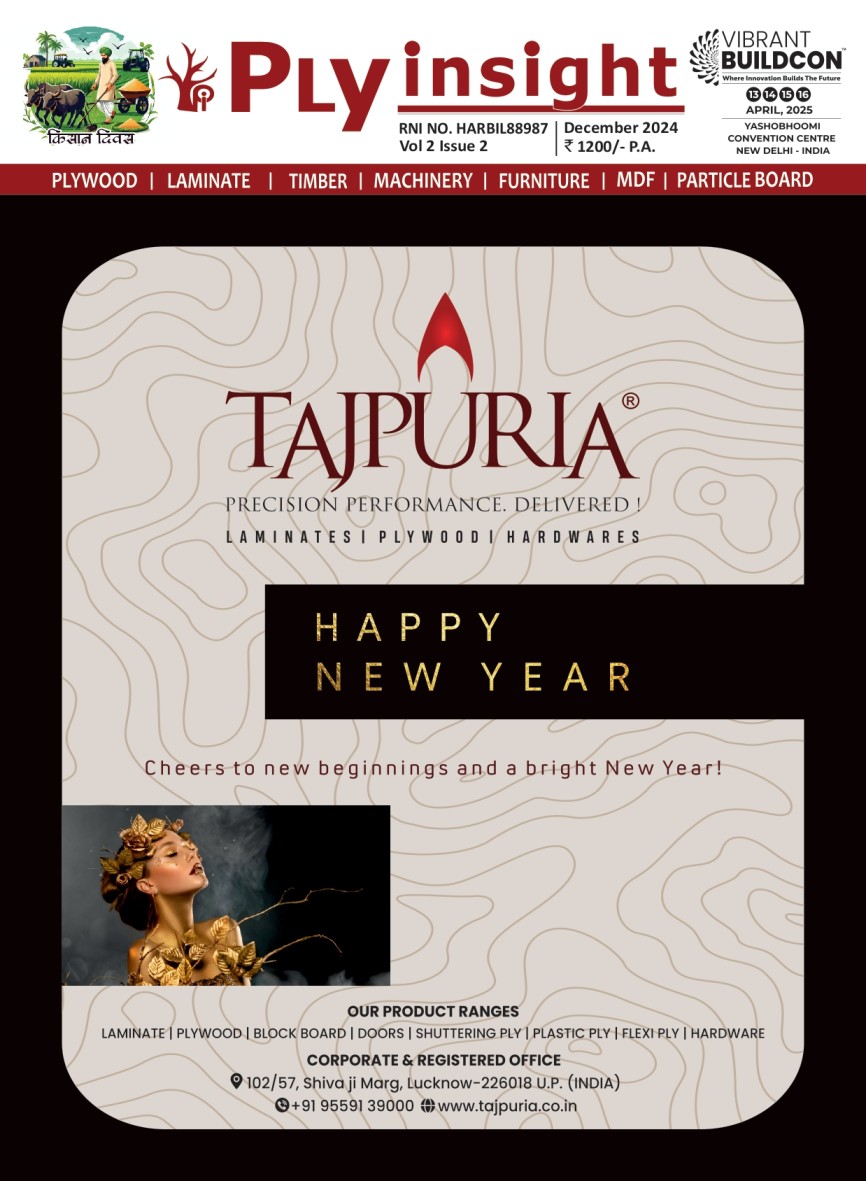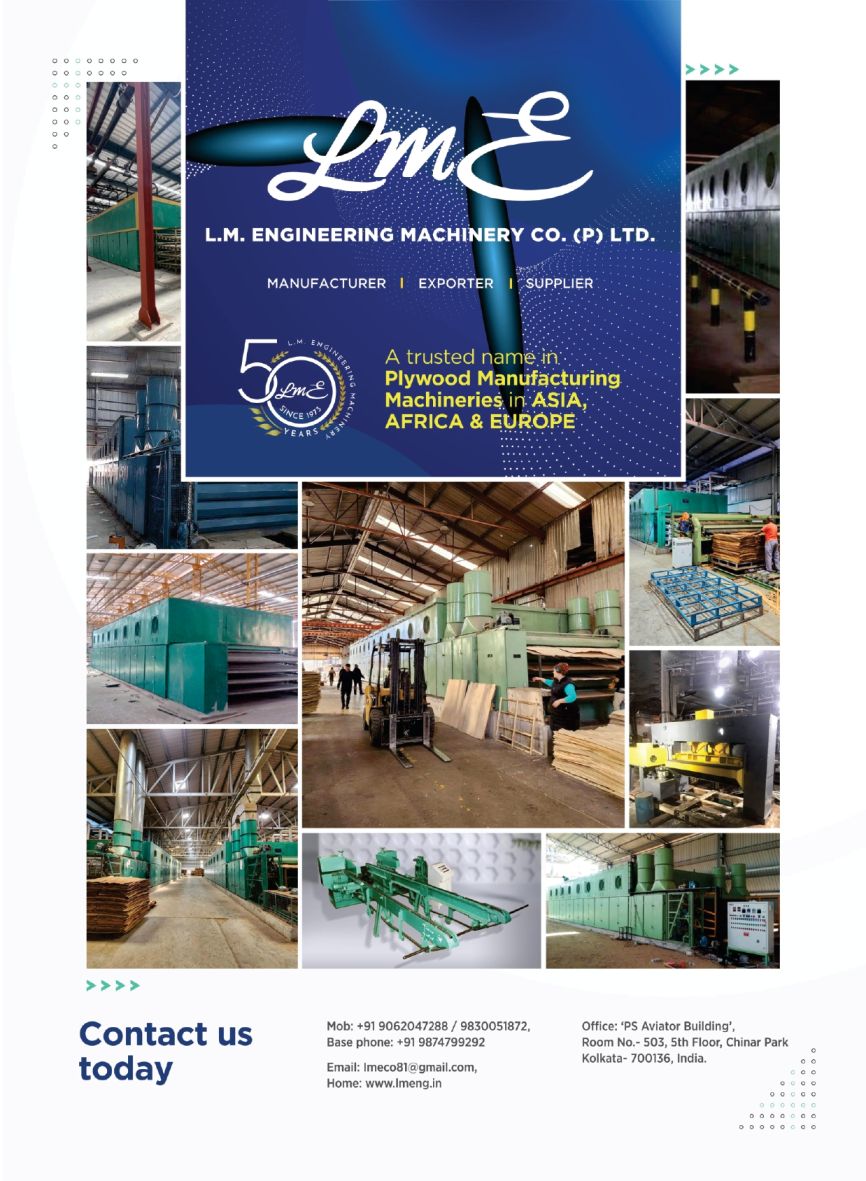New R&D Project Initiated by IPIRTI
- October 2, 2021
- 0
1. Amino adhesive blended with soya/tannin for panel products to minimize formaldehyde emission. PI: Ms. Sujatha D
Since risks of emission of formaldehyde from pressed wood products are more where bonding agent is amino formaldehyde resin, many countries are putting restrictions on manufacture of such resin. Even where such resins are being manufactured and used for bonding wood, lot of care is being taken to minimize residual formaldehyde in the product otherwise finished products are being coated or overlaid to minimize emission of formaldehyde from the products. Hence an approach to develop various amino resin systems by incorporating biomaterials or scavengers to minimize the formaldehyde emission level from plywood and particleboard to comply with the international standards is always continued. In this project, the renewable materials like soya and tannin will be explored to minimize the formaldehyde emission level from woodbased panels.
2. Investigating the performance of glyoxal resin to produce wood panels. PI: Dr. B. S. Mamatha
Studies have shown substituting formaldehyde partially or totally, in applications as a crosslinking agent in natural wood adhesives such as tannin-based adhesives, lignin-based adhesives and protein-based adhesives. Work has been conducted to prepare urea-based amino resins by choosing glyoxal to substitute formaldehyde partially or totally as wood adhesive for plywood and particleboard. Though glyoxal is nontoxic and nonvolatile, it is also much less reactive. The information on glyoxal-based resins application for wood adhesives and resins is very limited. This study aims using glyoxal to substitute formaldehyde and to evaluate the effects of the presence of the two aldehyde groups, which can lead to the production of pre-polymer chains (glyoxal–urea or glyoxal lignin/tannin)
3. Assessment of consumption of wood by plywood industry. PI: Sh. Prakash V
 Generating data on the wood consumption in a plywood unit helps in setting up the optimum number of plywood mills that can be accommodated in a given geographical area with respect to the available raw material and it also assists in planning the production activities in an optimal manner with respect to the raw material. This data also helps in decision making regarding the expansion of plywood mills or increasing the production capacity of the existing mills in a given geographical area, it also asssits in planning plantation activities by farmers and forest department to achieve the objectives of their work plans so that these industries shall not starve for raw materials and their production shall not be hampered in terms of plant capacity utilization or quality of products. The main objectives of the study is to scientifically collect the updated data in the current scenario on the wood raw material consumption by plywood/veneer industries of India and estimate the timber consumption in plywood industry.
Generating data on the wood consumption in a plywood unit helps in setting up the optimum number of plywood mills that can be accommodated in a given geographical area with respect to the available raw material and it also assists in planning the production activities in an optimal manner with respect to the raw material. This data also helps in decision making regarding the expansion of plywood mills or increasing the production capacity of the existing mills in a given geographical area, it also asssits in planning plantation activities by farmers and forest department to achieve the objectives of their work plans so that these industries shall not starve for raw materials and their production shall not be hampered in terms of plant capacity utilization or quality of products. The main objectives of the study is to scientifically collect the updated data in the current scenario on the wood raw material consumption by plywood/veneer industries of India and estimate the timber consumption in plywood industry.
IPIRTI Bulletin Volume IV August 21
MDF and Particle Board: Resistance to decay
- Particleboard and MDF panels from a mixture of wood and pine cones: Resistance to decay fungi and termites under laboratory conditions:
 Particleboard and medium density fiberboard (MDF) panels were produced using stone pine (Pinus pinea) cones, which were mixed with either wood particles or fibers from pine and beech wood at various ratios. Specimens from the panels were subjected to AWPA E10-06 soil-block tests using two brown-rot fungi, Gloeophyllum trabeum and Postia placenta and two white rot fungi, Trametes versicolor and Pleurotus ostreatus for 12 weeks. Specimens were also subjected to subterranean termites, Coptotermes formosanus, according to the JIS K 1571 standard test method for 3 weeks. Pinecone material in the furnish had no considerable effect on the decay resistance of particleboard and MDF specimens subjected to the brown-rot fungi; however, mass losses in the specimens exposed to the white-rot fungi were gradually decreased as the pinecone ratio in the furnish increased. No increased resistance was observed in the specimens exposed to the termites. In some cases, the specimens containing pinecone furnish had greater mass losses compared to the control specimens. Full paper is available at https://bioresources.cnr.ncsu.edu/resources/particleboard-and-mdf-panels-made-from-amixture-of-wood-and-pinecones-resistance-to-decay-fungi-and-termites-under-laboratory-conditions
Particleboard and medium density fiberboard (MDF) panels were produced using stone pine (Pinus pinea) cones, which were mixed with either wood particles or fibers from pine and beech wood at various ratios. Specimens from the panels were subjected to AWPA E10-06 soil-block tests using two brown-rot fungi, Gloeophyllum trabeum and Postia placenta and two white rot fungi, Trametes versicolor and Pleurotus ostreatus for 12 weeks. Specimens were also subjected to subterranean termites, Coptotermes formosanus, according to the JIS K 1571 standard test method for 3 weeks. Pinecone material in the furnish had no considerable effect on the decay resistance of particleboard and MDF specimens subjected to the brown-rot fungi; however, mass losses in the specimens exposed to the white-rot fungi were gradually decreased as the pinecone ratio in the furnish increased. No increased resistance was observed in the specimens exposed to the termites. In some cases, the specimens containing pinecone furnish had greater mass losses compared to the control specimens. Full paper is available at https://bioresources.cnr.ncsu.edu/resources/particleboard-and-mdf-panels-made-from-amixture-of-wood-and-pinecones-resistance-to-decay-fungi-and-termites-under-laboratory-conditions

Fungus wars: basidiomycete battles in wood decay
Understanding the mechanisms underlying wood decay basidiomycete community dynamics is crucial for fully understanding decomposition processes, and for modelling ecosystem function and resilience to environmental change. Competition drives community development in decaying woody resources, with interactions occurring at a distance, following physical contact, and through specialised relationships such as mycoparasitism. Outcomes of combative interactions range from replacement, where one mycelium displaces another, to deadlock, where neither combatant captures territory from the other; and a spectrum of intermediate outcomes (i.e. partial or mutual replacement) lie between these extremes. Many wood decay basidiomycetes coexist within a resource, in a complex and dynamic community, and new research techniques are focussing on spatial orientation of interactions in 3 dimensions, as opposed to historical two-dimensional research. Not only do interactions drive changes in species composition and thus wood decomposition rate, they also may have industrial applications in biocontrol of pathogenic or nuisance fungi, enzyme production, and in the production of novel antifungals and antibiotics. Altogether, fungal interactions are a fascinating and important field of study.
https://www.sciencedirect.com/science/article/pii/S016606161830006X

IPIRTI Bulletin Volume IV August 21






























































